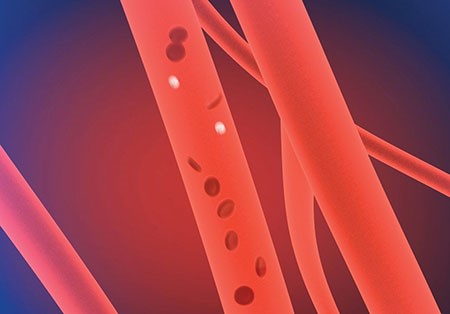
What is Laser Therapy?
K-Laser Class IV therapeutic lasers deliver specific red and near-infrared wavelengths of laser light to induce a photochemical reaction and therapeutic effect. Physiological effects include increased circulation, reduced inflammation, pain reduction and enhanced tissue healing. Laser therapy has been used in Europe since the 1970s and was cleared by the United States Food and Drug Administration (FDA) in 2005.
Laser Therapeutic Effects
During each painless treatment, laser energy increases circulation, drawing water, oxygen, and nutrients to the damaged area. This creates an optimal healing environment that reduces inflammation, swelling, muscle spasms, stiffness, and pain. As the injured area returns to normal, function is restored and pain is relieved.
Cellular Effects
During K-Laser Therapy, infrared laser light interacts with tissues at the cellular level increasing metabolic activity within the cell. By improving the transport of nutrients across the cell membrane, the increased production of cellular energy (ATP) is stimulated. The cascade of beneficial effects that follows includes increased cellular function and tissue repair.
Where do clinical results really come from?
There is always some debate as to which are the “right” parameters for which conditions. Conditions do not absorb light, tissues do, and more specifically, the photon absorbing chromophore. Beyond that, there are a variety of mechanisms involved that need to be stimulated. To this end, K-Laser employs the broadest range of wavelengths and frequencies targeting each relevant tissue type. Each step in the bio-modulation mechanism, within every treatment, will have the greatest chance of enhancing all healing processes involved.

Why is it necessary to use different frequencies?
It has been well established that different pulse frequencies elicit different physiological responses. During laser therapy, it is beneficial to deliver a variety of pulse frequencies. K-Laser has taken everything known about the makeup of each anatomical part and modified the settings to target just the right amount of bone, soft tissue, and fat. K-Laser’s approach uses the largest variety of laser parameters utilising multiple distinct phases within each protocol. This dynamic range, combining 4 wavelengths and frequencies from CW to 20,000 Hz, has the best chance at stimulating all of the body’s cells to heal themselves more efficiently.
How does Super Pulse (ISP) enhance Laser Therapy?
Lasers operating in super pulse mode deliver bursts of high peak power for a short period of time. The K-Laser Intense Super Pulse (ISP) mode delivers more laser energy to deeper tissues mitigating superficial heat build-up. The unique, and K-Laser exclusive, high powered 20W ISP mode lets the laser operator choose the proper power output and pulse frequency for effective laser therapy.
Why are wavelengths so important?
Wavelengths determine laser energy’s depth of penetration in tissue and specifically target beneficial chromophores to stimulate the photochemical reaction.

660nm
Irradiating an area with 660nm, a wavelength where melanin in our skin absorbs very well, will ensure a large dose to the superficial region. Since light can both inhibit bacteria and promote cell growth, laser therapy has incredible results in wound healing and scar tissue regulation.

970nm
Water in our blood transports oxygen to the cells, carries waste away, and absorbs very well at 970nm. The energy created from absorbing a photon gets converted to heat, creating a temperature gradient at the cellular level, stimulating microcirculation, and bringing more oxygen-fuel to the cells.

905nm
The quicker oxygen is released into the blood stream, the more fuel the cell has to carry out all of its natural healing processes. The peak of haemoglobin’s absorption lies at 905nm, and when this radiation is absorbed, more of this oxygen-fuel is made available to the cells.

800nm
The enzyme determining how efficiently the cell converts molecular oxygen into ATP has the highest absorption at 800nm. Regardless of the enzyme’s molecular state, when it absorbs a photon it will flip states. Photon absorption will accelerate the process and increase cellular ATP production.
Why is power so important?
If wavelength determines a laser energy’s depth of penetration then power determines it's saturation at the targeted depth. It would be a mistake to consider one without the other. Power (Watts) is the number of photons of radiation you can deliver per unit time. The energy deposited (Joules) is the accumulation of these photons over time (1 Watt=1 Joule per 1 second). By starting out with more Watts at the surface, more will penetrate to desired depth.
For an illustration, consider the following:
1 Watt laser: 40 seconds to deliver 10 Joules of energy to a 4 cm depth
4 Watt laser: 10 seconds to deliver 10 Joules of energy to a 4cm depth
The higher-powered laser will be able to deliver therapeutic doses to deeper targets in a shorter amount of time.